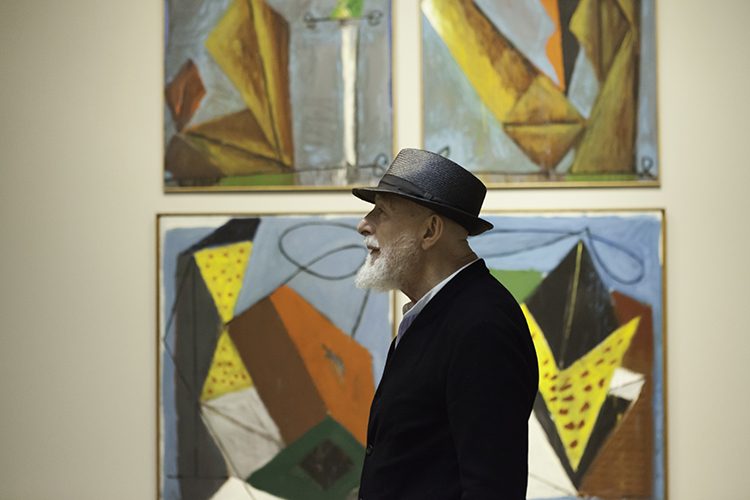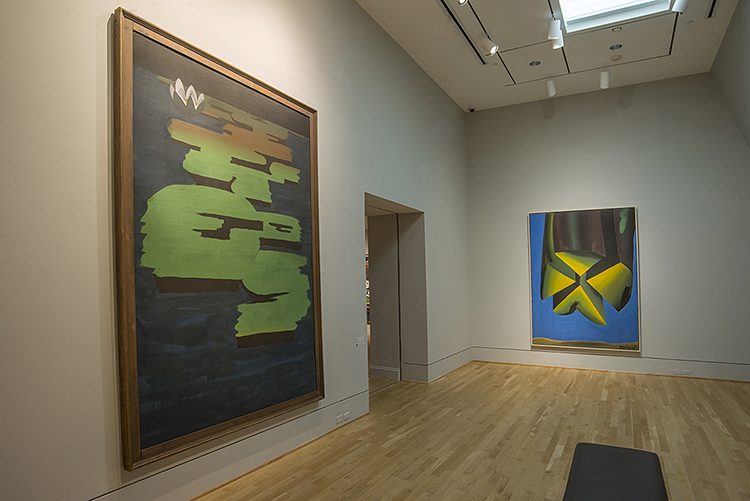We interviewed Phillips director and Markus Lüpertz exhibition curator Dorothy Kosinski about the exhibition and the artist:
In one small gallery of the Markus Lüpertz exhibition, you’ll find a kind of manifesto that Lüpertz offered once in a question and answer session with an author, which really reveals much more about his thinking. You’ll also find two photo blow-ups of Lüpertz, and you’ll see him in his (what I consider) regalia.
In the nineteenth century, Baudelaire would have called him the “artist dandy;” the Germans talked about some artist figures as the sort of “noble artist,” and he definitely, I think, adopts almost a performative presence in the world that’s part of his art. When I had the pleasure of spending two days with him here during the installation, he wore his fedora hat, and his beautiful cravat, and his spectator’s shoes, his beautiful cane, his elegant goatee, and it’s not an act of silliness. He also explained that he’s adopting the stance to protect himself, it’s like a buffer from the triviality, the white noise of the world. He’s an artist and he needs to hold onto that endangered platform in the contemporary world, that’s how I would explain it. But you’ll see two great pictures of him that gives sense of his dynamism and keen intelligence and forceful presence.
One essential reason that provoked me to embrace this project is a clear question: why is this very famous artist, known all across Europe with many exhibitions and publications, relatively unknown in the United States? Perhaps it goes back to the fact that he’s not easy to classify, he’s not about a recognizable style, that his paintings are challenging. There are probably also market forces that impact the evolution of an artist’s career. But we’re proud here at The Phillips Collection, in conjunction with our colleagues at the Hirshhorn Museum who are staging simultaneously a Lüpertz project with us, that we can offer an in-depth look at this important artist’s career.
Dorothy Kosinski, Phillips Director and curator of Markus Lüpertz




